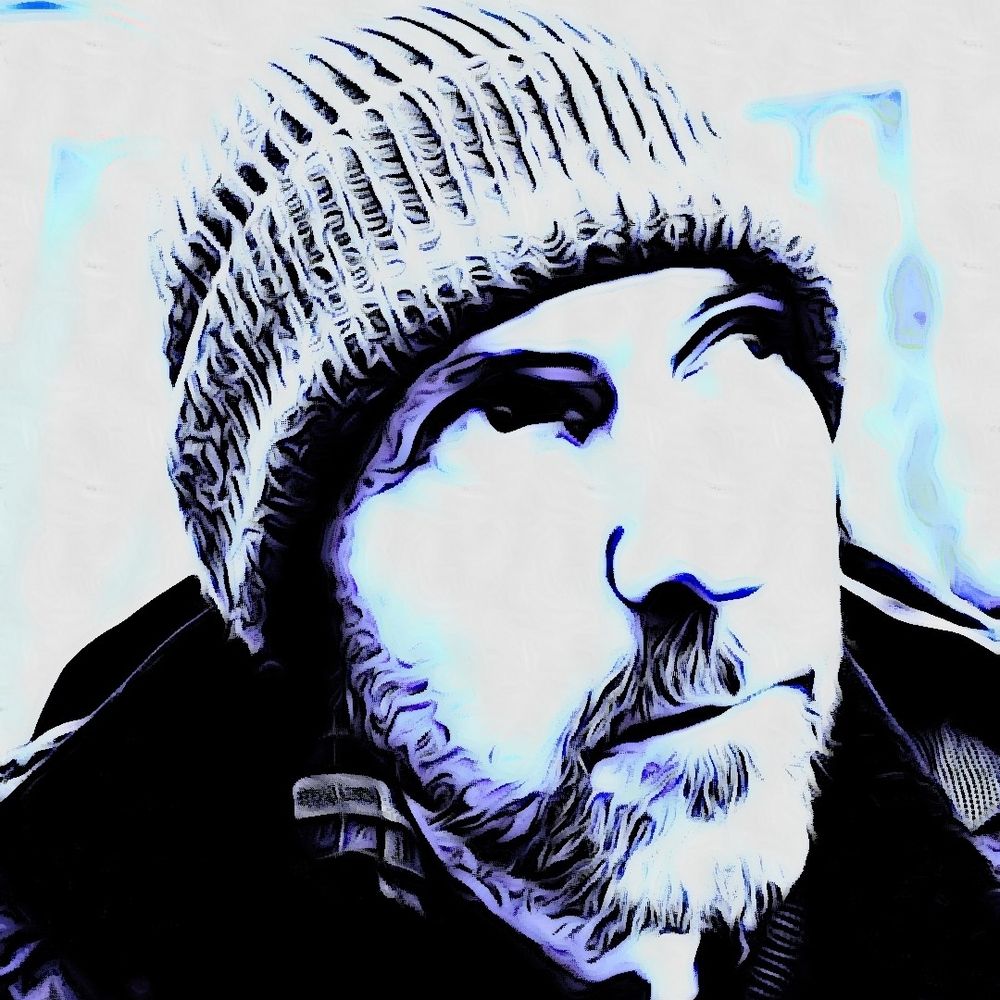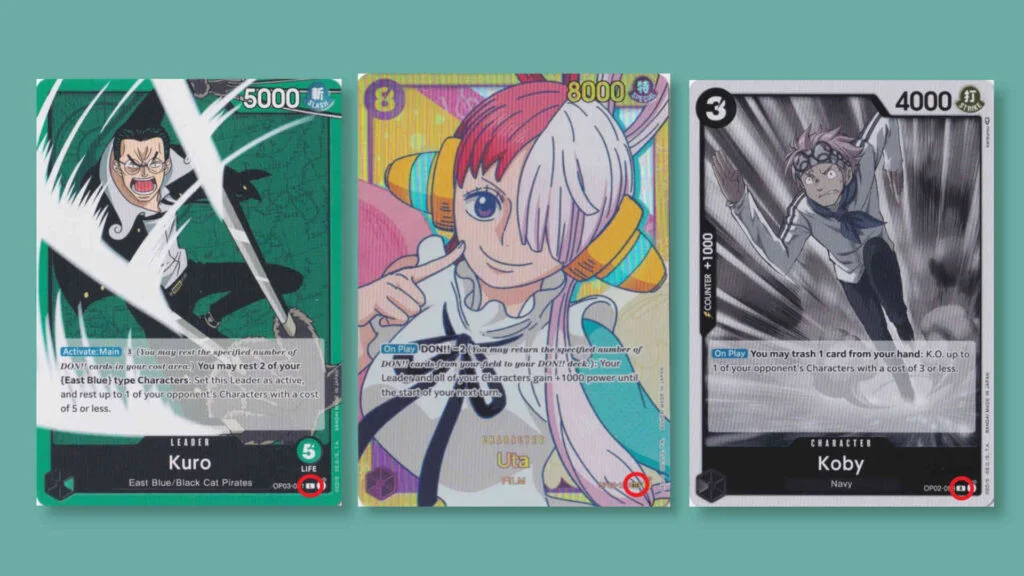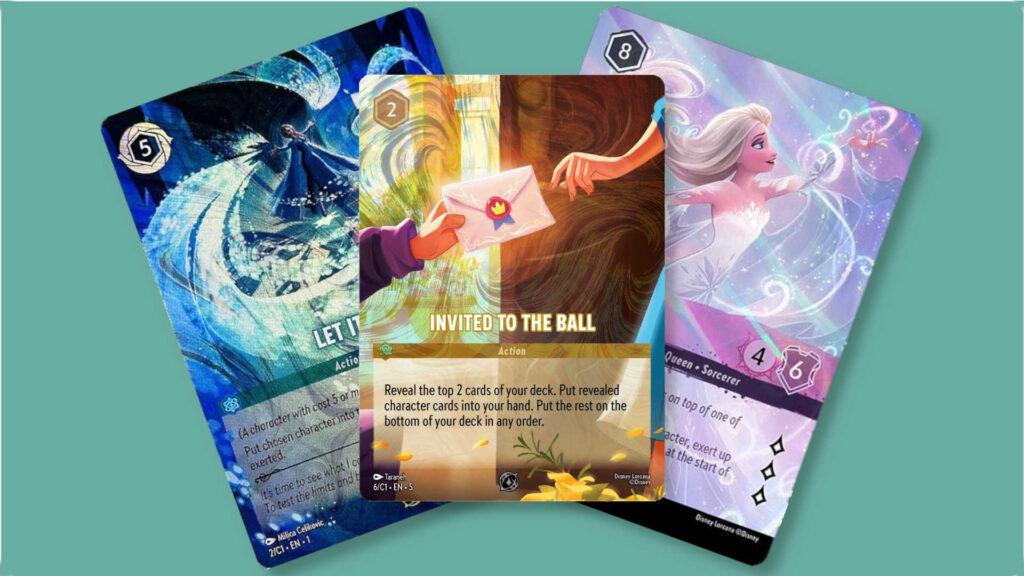It’s time to don the Straw Hat and seek out the rarest of treasures, as we get all of the One Piece Card Game Rarities explained!
The One Piece Card Game has been quietly conquering the seven seas since it launched in 2022.
Though it isn’t in the same league as a game such as Disney Lorcana in terms of mainstream appeal, One Piece’s live action Netflix show, the long running anime and, of course, the original manga series have retained and continued to grow a large and dedicated fan base.
So it stands to reason that the card game would also fall into the hands of One Piece fans – and it’s done so very successfully so far, with compelling gameplay and beautiful cards, with few of the availability issues that have plagued higher profile games.
With numerous booster sets already released – take a look at our guide to the best One Piece Card Game booster boxes – it’s definitely worth knowing your Rares from your Super Rares.
So without further ado, let’s get the One Piece Card Game Rarities explained!
Table of Contents
ToggleWhat Rarity Levels Are There On One Piece Card Game Cards?
Though you’ll find the usual Commons, Uncommon and Rare cards in the One Piece Card Game, there’s also more that are definitely worth knowing about and understanding.
Here’s the full list of rarities in the One Piece Card Game:
- C: Common
- UC: Uncommon
- R: Rare
- SR: Super Rare
- SEC: Secret Rare
- L: Leader
Where Can I Find The One Piece Card Game Rarity?
You’ll find the rarity abbreviation in the bottom right corner of each One Piece Card Game card, just to the left of the card’s set number – so C for Common, UC for Uncommon and so on.
In the images we’ve used in each section, we’ve highlighted the card’s designation with a red circle – so you should be able to see its rarity level pretty clearly!
What Do The One Piece Card Game Rarity Classifications Mean?
So, a few of these are self explanatory, but some might need a bit of explanation.
Also, even if they are self explanatory, how about we take a look at how common each type of these rarities are, as well as what their typical purpose is in the One Piece Card Game?
1. Common Cards
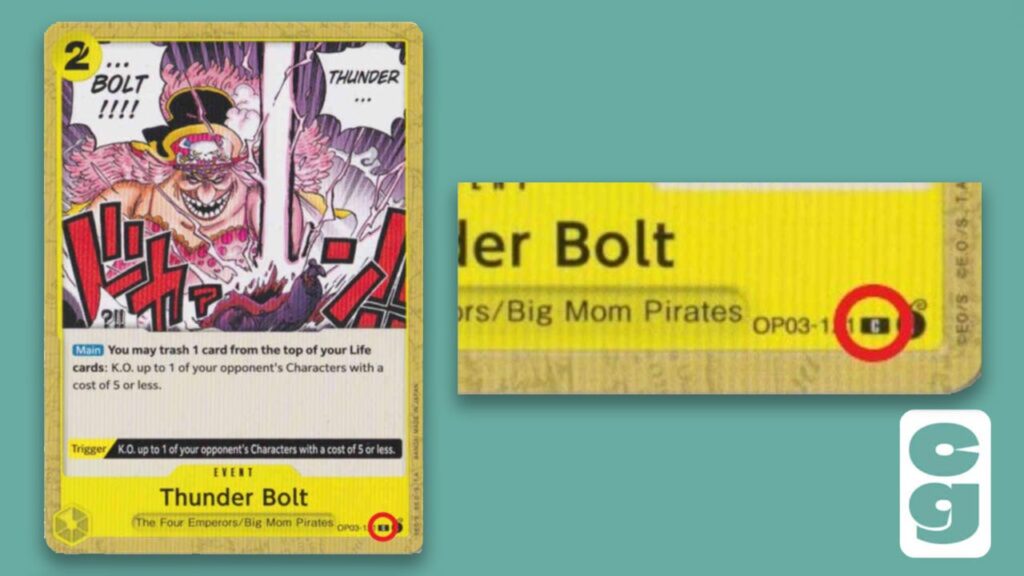
Here’s one that is self explanatory; in each booster pack, you’ll find several Common Cards, because – well, it’s right there in the name!
These are the staples that you’ll find making up the numbers in many One Piece decks.
They’re not the most powerful cards, but they’ll sometimes have interesting effects that’ll help you set off other combos with your more powerful cards – and they’ll offer support to many other card types.
2. Uncommon Cards
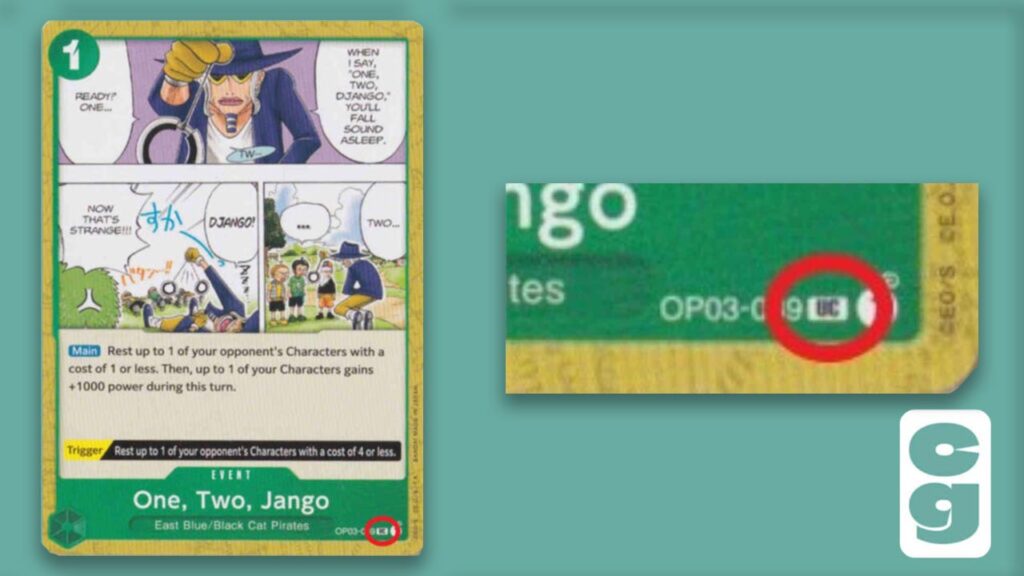
Naturally, Uncommon Cards are slightly less Common than our number one entry here.
Despite that, you are – unsurprisingly – still likely to find multiple Uncommon cards in each booster pack.
Like Commons, Uncommons won’t be the most impressive cards at face value – but you’ll often see them showing up quite often in decks, as back up to the lesser seen cards we’ll find in the higher rarity levels.
3. Rare Cards
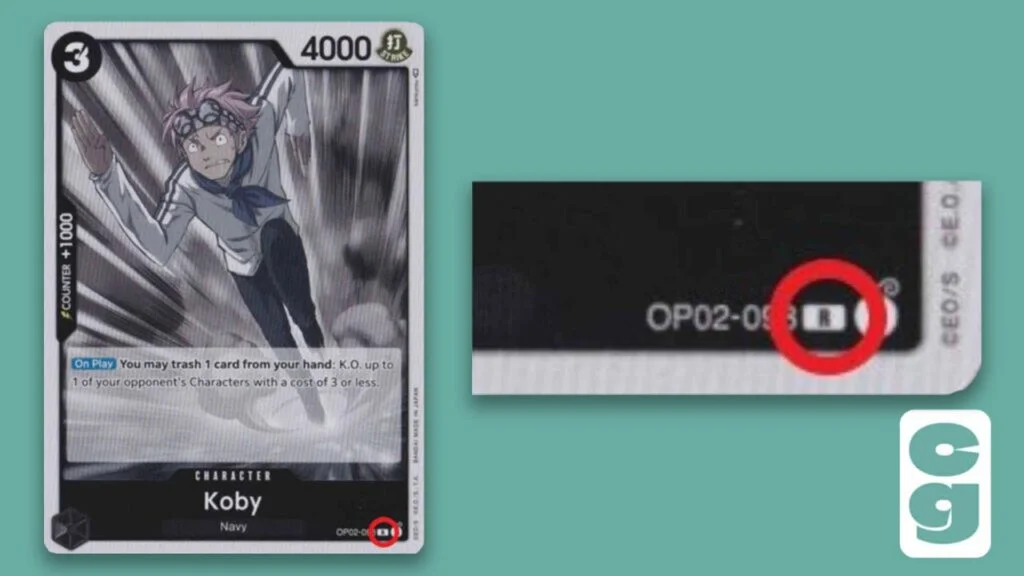
This is where things get interesting, because they’re easier to see at first glance – as they’ll have a foil treatment, along with the R in the bottom right to denote its rarity.
Rare Cards will be found at the rate of at least one per pack, though you may get two in a booster if you don’t get a second card that’s more rare than a card denoted with an R.
Rare cards tend to be where things get really exciting in a CCG; this is where you’ll find the most powerful abilities and combo powers – by design, players will get less of these as they’re not supposed to dominate built decks.
However, with the rise of the internet – including stores such as eBay or specialist CCG/TCG stores that sell single cards – it’s very easy, if sometimes costly, to purchase multiple copies of Rare (or even rarer!) cards to build a deck around.
4. Super Rare Cards
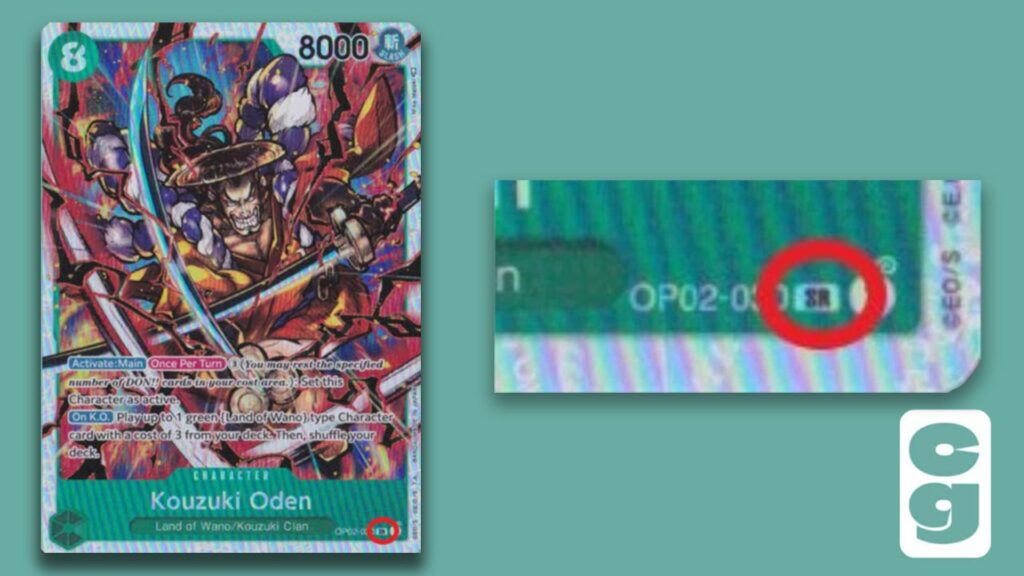
Even more powerful than Rare Cards are the Super Rare Cards.
These tend to be the most powerful cards that will be built into a deck in smaller numbers, if not just as a single card, with the intent of them being the backbone of any deck’s strategy.
Typically, there’s around 8 per box of 24 boosters, so the pull rate is around 1 in 3.
It’ll be as a replacement for a second Rare; you’ll still get one Rare card, but alongside it, if you’re lucky, there’ll be a Super Rare instead of a Rare.
In the One Piece Card Game, Super Rare cards have an SR in the bottom right, but also a clearer sign of their status: they all have shiny silver borders.
5. Secret Rare Cards
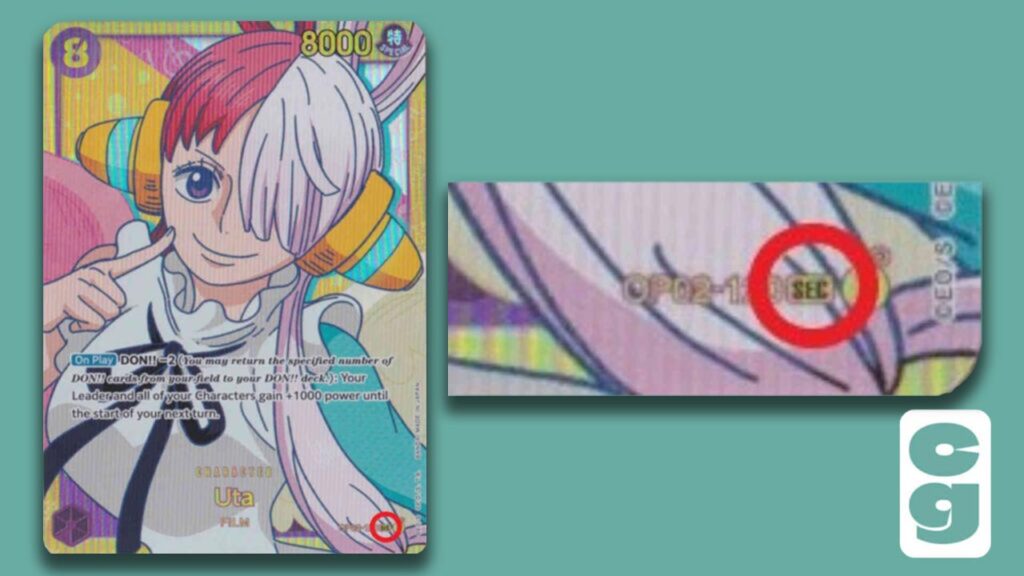
So in most collectable card games, with the set numbers at the bottom of the cards, you’d think that shows an accurate number that reflects how many cards are in the set, right?
Wrong!
Secret Rare Cards are usually cards that go beyond the set numbering, so for example – if a set has 180 cards, a Secret Rare may be numbered 181/180 or beyond.
They’re not always the most powerful cards; usually, Secret Rares are alternate art versions of other cards in the set.
However, their usually lavish illustrations and design makes them highly desirable – not to mention valuable – to collectors.
In the One Piece Card Game, Secret Rare cards have gold borders, a textured finish and the SEC designation in the bottom right.
In contrast to Secret Rares found in other card games, this SEC designation is the only sign of their rarity status – the set numbering is adhered to in One Piece, even for Secret Rare cards.
These are even less prevalent than – the already thin on the ground – Super Rares.
They’re an exciting find if you happen to pull one from a booster pack, as there’s generally only 1 Secret Rare in every 24 packs.
6. Leader Cards
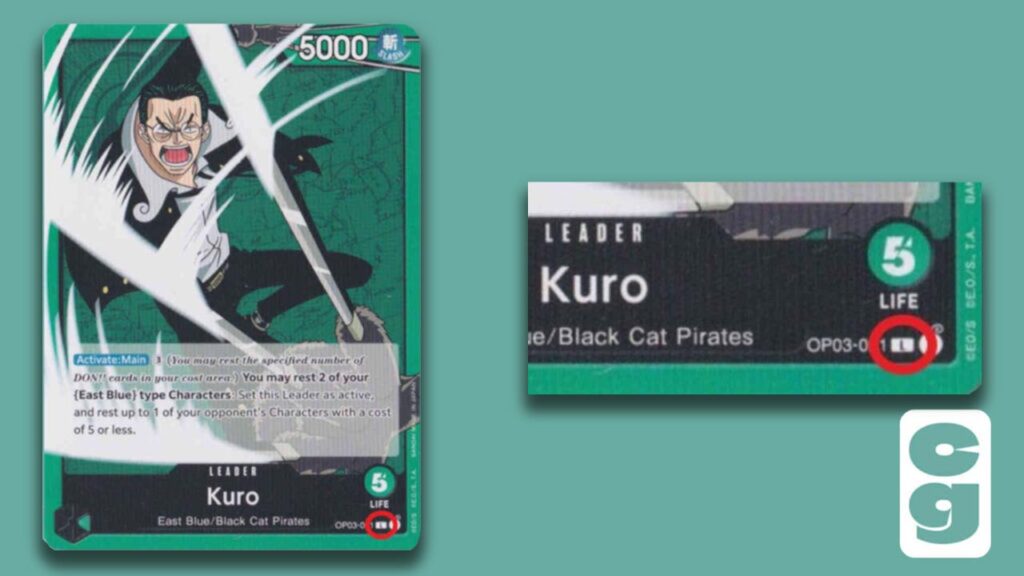
Somewhat unique to the One Piece Card Game, Leader Cards are what your deck’s entire strategy – right down to the Commons – will be based around.
They’re different to other cards in that the back is Red; this difference is to ensure that they’re separated from your other cards – they don’t form part of your deck in the sense that they’re shuffled in.
Rarity wise, you’re likely to find cards with the L designation in every other pack of boosters that you open; typically, there’s 12 Leader cards per booster box of 24 packs.
7. Other Card Types
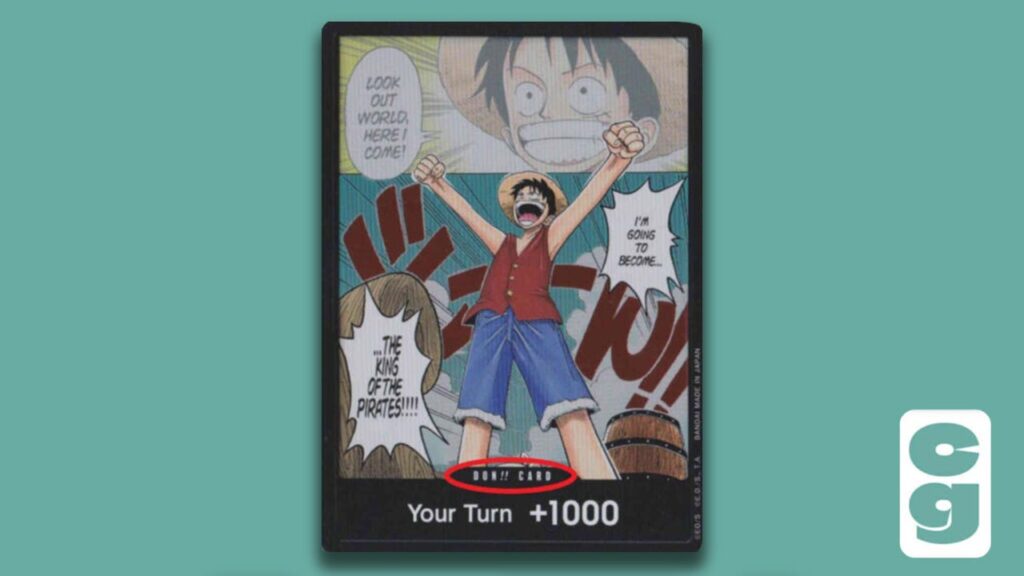
DON!! cards – which are what the One Piece Card Game uses to get the rest of your cards into play – are very common, but rarer versions of them, with alternate art, for example, do exist.
There’s usually only one of these per booster box; all DON!! cards, even the alternate art variants, have white backs.
All DON!! cards perform the same function and have the same text, regardless of their art – they’ll always state ‘Your Turn +1000’ at the bottom of the card (as you can see in the image above, just below the circled ‘DON!! Card element).
There’s also alternate art cards – different to Secret Rares – which have new illustrations and textured card treatments to their standard counterpart cards.
These are usually found at the rate of 1 in every 12 booster packs.
Finally, there are Manga alternate art cards, which are extremely rare – and these are often seen going for incredibly high values on secondary marketplaces such as eBay.
Check out our most valuable One Piece OP-03 cards for more on those and other valuable cards!
Where Can I Get Started With The One Piece Card Game?
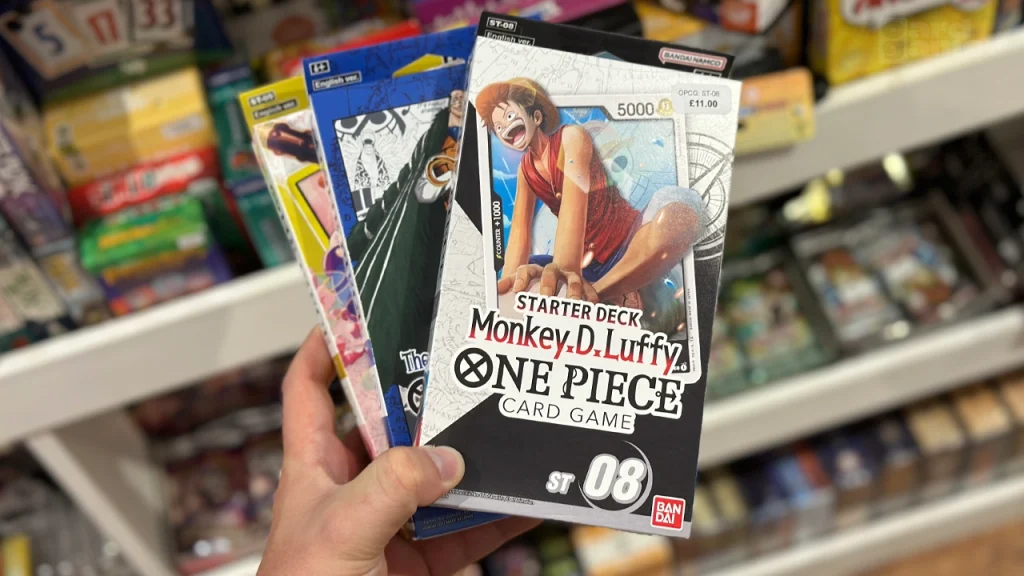
We’ve already taken multiple looks at the One Piece Card Game – but if you’re looking to get involved, we’d suggest checking out our best One Piece Card Game Starter Decks article first and foremost.
From there, once you’ve got a solid deck to build upon and you know how to play the game, take a look at our One Piece Card Game sets list – this will give you good insight as to what each set features and what new elements are added with each release.
Lastly, why not check out our most valuable One Piece cards list? If nothing else, you’ll be able to get a glimpse at just how sought after and expensive some of the game’s cards can be!

